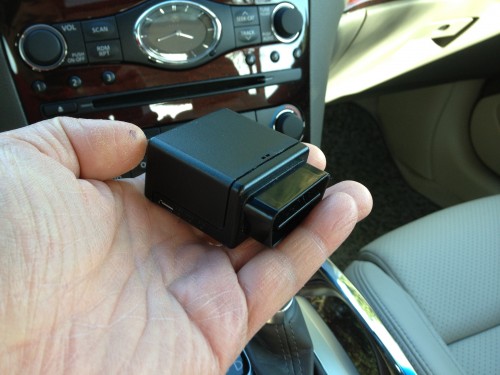
If you’ve ever applied for car insurance before, you may have been asked if you have tried installing tracking devices on vehicles or at least considered using them. Insurance companies are known to reduce premiums if the unit has a tracking device. But what exactly are these systems? And what makes them so popular among fleet owners and personal users alike?
Vehicle tracking systems are not to be confused with car navigation devices. As the name implies, car navigation provides navigational support. But with a GPS tracker, you not only obtain accurate location information, but you can also download vehicle performance data and utilize programmed emergency options. These universal functions are exactly why GPS has been very widely used in various industries.
Today, you will be learning about the proper way of installing tracking devices on vehicles. Whether you are a fleet manager or a personal user, you can start tracking today with the help of this comprehensive guide.
A Guide to Installing Tracking Devices on Vehicles
Installing tracking devices on vehicles is easier than you think, given you have all the equipment needed. In general, there are two ways to install a tracking device: hardwiring it to the vehicle or using a plug-and-play device.
Scroll down for videos

anyms.me
Hardwiring GPS trackers to your vehicle
As the name implies, hardwired tracking devices need to be manually connected to the car’s electrical system to function. The installation is quick and usually takes only less than half an hour. The main advantage of hardwiring your tracker is that you get to establish a reliable power connection and hide the tracker from car thieves. The best place to position your vehicle tracking device is under or inside the dashboard or above the pedals.
Here’s how hardwiring a GPS tracker to your car is done:
- Secure the 12-VDC power source to the red wire found on your tracking device.
- Start by attaching the wiring harness to the transceiver. Follow the “poke and wrap” technique to avoid connectivity issues.
- Remove about an inch of insulation from the wire with the power source.
- Take a sharp object and poke through the wire, creating a loop.
- Take off an inch of insulation off the end of the red wire on your tracking device.
- Twist the ends of the red wire (tracking device) and poke through the loop you made on the car’s power source.
- Squeeze loop shut, and twist the red wire around. Wrap in electrical tape to ensure it does not ground out.
- Find the vehicle’s ignition wire, and connect it to the white wire on the tracking device.
- Finally, connect both the vehicle and tracking device ground wires together.
- Consider using a zip tie, Velcro, or tape to hold it in place as you don’t want your tracker to move while on the road. It can damage the wires as well as your device.
If you are not knowledgeable about basic automotive work, you could have the GPS installed and hardwired by professionals. The decision as to whether to complete the installation of your GPS vehicle tracking system yourself or use a professional is purely yours, but it will depend largely on the type of unit you have purchased or the requirements of your installation. Even if you can fit the device yourself, it doesn’t necessarily mean you should. In some cases, you may be required to have the GPS tracker installed by a certified individual for insurance premium purposes.
If you do opt to install the device yourself, make sure you follow all the instructions precisely and check the device carefully to ensure it works after the installation. Be aware that DIY vehicle tracking installation means you will have no external support available if something goes wrong, so make sure you are confident with how to deal with any issues that may arise.
Tips to remember
- Make sure that the power of your tracking comes from the ignition column.
- Avoid connecting the device to the car radio, as you won’t get sufficient power.
- See to it that the device always gets 12-VDC power even when the ignition is off. You can test this with the help of a multimeter. Watch the power during startup and shutdown and make sure it does not dip below 9 volts.
- Avoid touching wires connected to the airbag since this could up end up compromising your overall safety.
- Manufacturers usually recommend the installation of the tracker to be in a safe, dry, mechanically protected area that does not receive direct sunlight or not at an extreme temperature.

portnews24.com
Plugging in GPS trackers to the OBD port
Plug-in trackers require an access to power. The most reliable power source is through the vehicle’s OBD port. Since this part of the car is not used often, you can utilize it as a power source for your tracking device and eliminate the need to charge. You can fit your tracking device with the use of the OBD-II port located on your dashboard.
If you purchased a car after 1996, chances are it has an OBD-II (On-board diagnostics II) port. Every car or truck on the road manufactured after 1996 is legally mandated to have one installed. The OBD-II is an on-board computer that monitors emissions, mileage, speed, and other data about your car. It features a sixteen-pin port located under the driver’s side dash.
Your tracker can be installed and removed in less than a minute. With the help of a durable extension cable, you can even hide it within the dashboard. Trackimo’s universal tracking device is a plug-in GPS tracker. The device captures telematics that generates data based on vehicle performance.
Installing a plug-in GPS tracking device is as easy as three simple steps:
- Locate the OBD-II connector.
- Plug the device to OBD-II port.
- Register to the tracker’s companion app by creating an account, and start tracking your device.
Plugging In to the OBD Port versus Hardwiring GPS Trackers: Which One’s Better?
When it comes to installing tracking devices on vehicles, there are various ways to do it, and just like any other task, each of these ways have their own pros and cons. If you have zero experience in vehicle mechanics, then it is best you consult a professional to avoid causing damage to your device or the vehicle. OBD ports are recommended for people seeking a hassle-free installation. But since they can be easily removed, they may not be advisable for businesses. Fleet owners usually hardwire their GPS devices to avoid employee tampering. The same thing can be said for private vehicle owners who want to prevent car theft.
Pros of hardwired GPS trackers
- Secure installation. Hardwired GPS trackers, as we discussed earlier, require a three-wire installation (ground, power, and ignition). This hides the vehicle tracking device underneath the hood and out of sight.
- Provides more than vehicle and engine data. The hardwired vehicle tracking device comes equipped with a quite a lot of possible add-on data recordings such as input monitoring, electronic logging devices, and more. Driver ID is also possible if you require your drivers to use a key fob to assign themselves to vehicles before driving them.
Cons of hardwired GPS trackers
- Takes time to install. If you hire professionals to hardwire the GPS trackers, it usually takes them anywhere from thirty to forty minutes on average to completely install them. It can take even longer to install it yourself. This means that vehicle downtime must be accounted for when you plan to implement a GPS tracking solution to your vehicles if you own a fleet.
- Takes time to remove. Because they take thirty to forty minutes on average to install without any accessories, this means that it is not easy or simple to move these tracking devices between vehicles. Just like installation, you must plan for vehicle downtime if you need to transfer a hardwired device from one vehicle to another.
Pros of plug-in GPS trackers
- Easy to install by yourself. Plug-in tracking devices are incredibly easy to install into any vehicle with an OBD-II port. The position of the OBD-II port can vary between vehicle, make, model, and year, but is typically located underneath the dashboard inside the cab. With this vehicle tracking device, you can simply plug into the OBD-II and start receiving the necessary data from your vehicles.
- Portable. Because the installation is easy, it also means that it’s easy to transfer between vehicles. This becomes extremely convenient when it’s time to replace an existing vehicle within your fleet. There’s no need to plan for vehicle downtime to remove it and install into the next. Simply unplug from the old one and plug in to the new one.
- Automatically receive engine diagnostics. The plug-in GPS tracker automatically pulls diagnostic information from the engine because it is plugged into the OBD-II port. No additional installation accessories are required to see this type of information.
Cons of plug-in GPS trackers
- Easy to remove or steal. Since the plug-in tracker is so easily installed, that also means that they can be easily removed, which is both a good thing and a bad thing. The intent does not even have to be malicious for the device to be removed. An accidental hit from a leg getting in or out of the cab can cause the device to be jerked loose from its position in the OBD-II port.
- No covert tracking. Note that most OBD-II ports are exposed. This makes the device visible to the driver.
- Vehicle and engine data only. Most plug-in trackers have no harness to connect accessory wires. This means that there are no options for additional types of monitoring such as input monitoring, which gives you valuable vehicle information like snow plows up/down, doors open/closed, seat belts on/off, etc.
Each fleet has its unique set of needs. Assess yours to determine which installation works best for you. If you’re wondering where else to hide a GPS tracker in your car, check this article out for covert tracking.
Watch the videos below